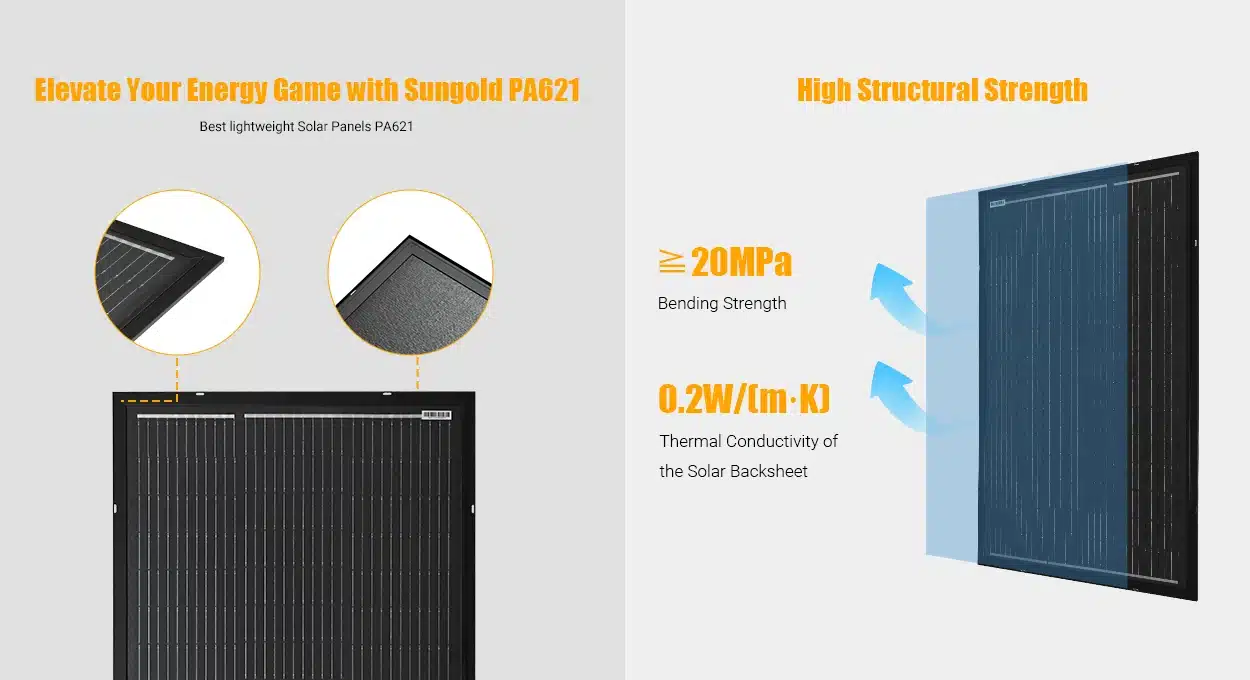We will compare several solar panels to see which is the best choice.
There are 3 types of panels in front of me, including 120W portable panel (bxf series), 100W flexible panel (tf series) and 100W lightweight panel (PA621 series).

Materials and specifications
All 3 panels use the same 182 monocrystalline silicon cells, the lightweight and flexible panels have 42 cells each (3*14 combination), while the portable panel has 72 cells (4*18 combination) because there are 18 cells per fold. The portable panel has 30 more cells than the other 3, so it slightly increases the wattage and voltage, but the overall power difference is not much. The maximum operating voltage of the portable panel is 20.9V and the current is 5.75A, while the operating voltage of the lightweight and flexible panels is 24.4V and the current is 4.1A. The efficiency of the 3 panels is roughly the same, about 22.7%. In addition, the open circuit voltage of the portable panel is 24.4V, while the other two are 28.5V. The short circuit current of the portable panel is 6.03A, while the lightweight and flexible panel is 4.3.
Size and weight
One of the main differences between these panels is size and weight. Let’s start with the smallest and lightest flexible panel, which weighs about 1.92kg (about 4.23 pounds). Next is the popular lightweight panel PA621, which weighs 2.82kg (about 6.21 pounds), and finally the portable panel without a casing, which weighs about 3.41kg (about 7.51 pounds). The folded size is 470*413*37mm and the unfolded size is 1665*470*3mm. As you can see, the weight difference between the panels is obvious.
Use cases for the three panel types
There are some important use cases and considerations when choosing a panel. Portable panels are a good choice if you need to power a small device or need to be portable. They are sturdy, waterproof, and can be folded into a small bag to carry. It is also compatible with multiple energy storages, such as jackey, ecoflow, bluetti mobile energy storage, which is a perfect combination for mobile life, especially for camping, self-driving tours and RV life, which are not suitable for fixed installation.
If you don’t need portability, flexible solar panels and lightweight solar panels have their own characteristics. Flexible panels can be bent up to 258 degrees and are suitable for surfaces such as ships, RVs, roofs or flat spaces without rigid panels. These panels are lightweight and easy to install. They can be fixed with industrial adhesives or VHB tapes without punching holes, making them suitable for mobile or temporary applications. Lightweight panels are suitable for large flat surfaces and BIPV that require permanent installation, such as roofs, balconies and RVs. Lightweight panels use high-efficiency monocrystalline solar cells and high-strength composite backsheets, which can transmit light while protecting the internal photovoltaic cells. A unique backsheet material is used to resist power drop caused by high temperatures on the roof of the caravan. With a thermal conductivity of only 0.2 W/(m·K), it ensures optimal performance in harsh conditions. They are durable and can withstand weather conditions such as wind, rain and snow. Flexible panels can last 6 to 20 years under normal conditions, while lightweight panels can last 10 to 25 years. Lightweight panels are more durable and easy to install. They can also be used in more complex areas, requiring mounting brackets and specific installation methods. Depending on your installation experience, we recommend that you may need a professional solar installer to help you complete the installation.
Installing Your Panels
All three panels use MC4 connectors, and to connect the device, simply connect the red to the red, the black to the black, and then plug it into the back of the device.
Testing Solar Input
When choosing a solar charging site, it is important to ensure that it is in direct sunlight and without obstructions or shadows. If the panel is in the shadow or blocked, the efficiency will be reduced and the output will not be maximized. In this test, we put them side by side to get the same test results.
Conclusion
As you can see, the portable solar panel outputs about 90 to 110 watts, the flexible solar panel is about 80 to 90 watts, and the lightweight solar panel is stable above 90. If you want to learn how to properly set up the system and how to maximize the power output, you can click here to watch another video and get more information. We also have a higher power version of the portable one, which can reach up to 400 watts.













